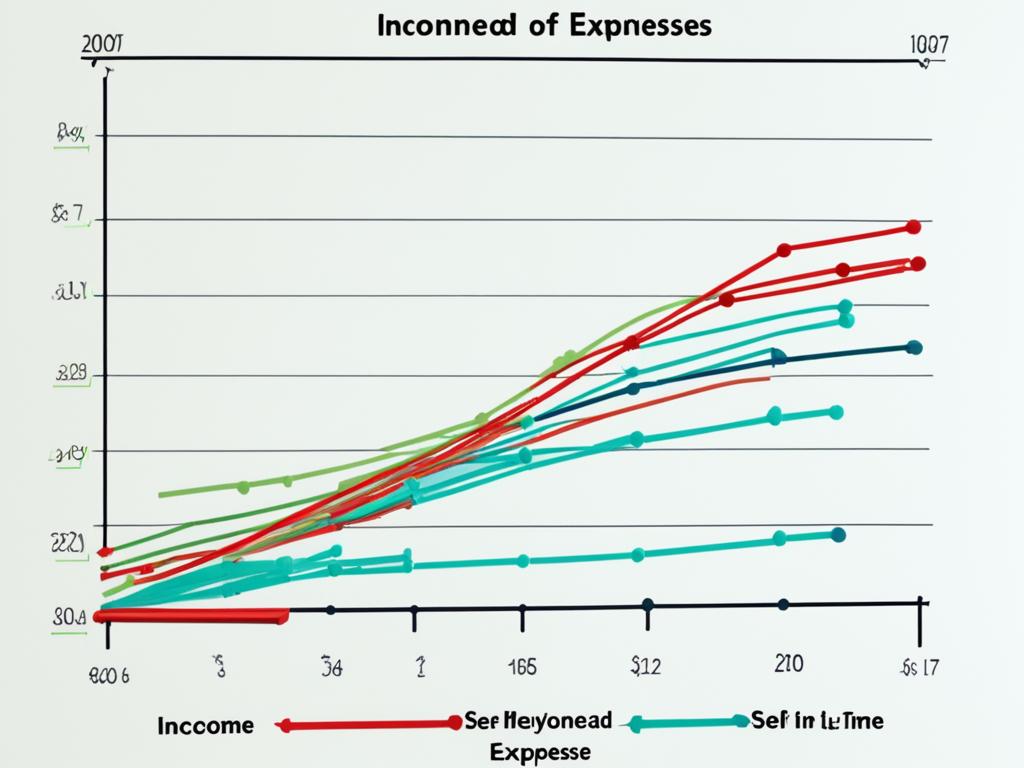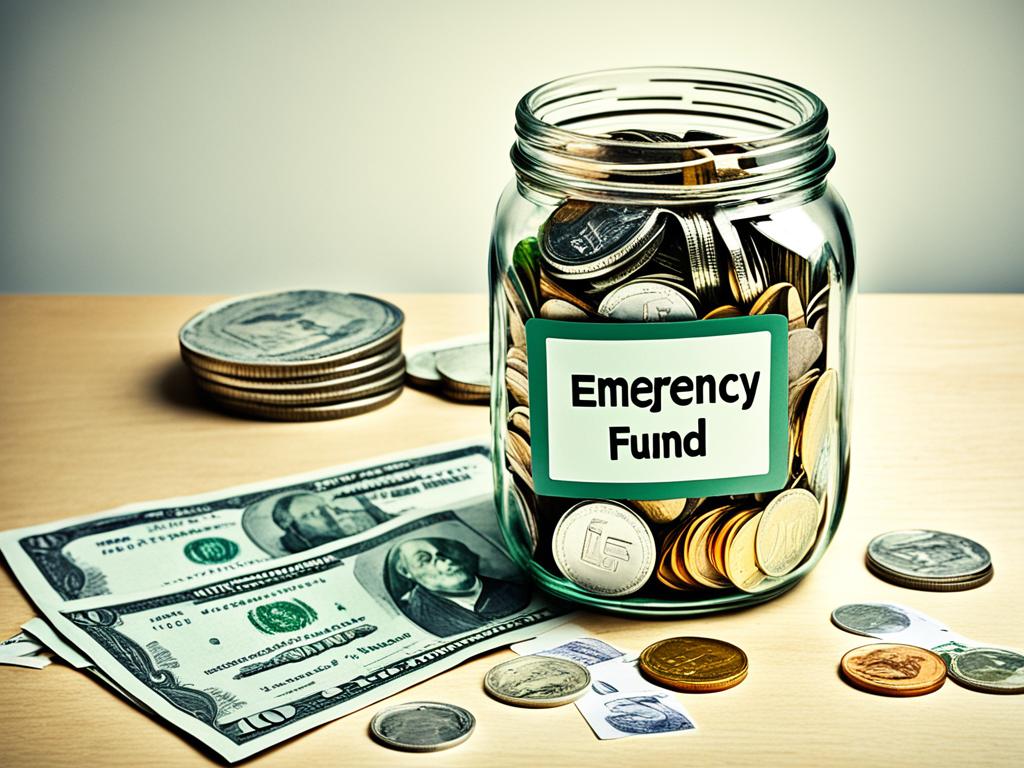
How to Create a Financial Plan for Self Employment
More people are choosing self-employment for its freedom and flexibility. If you’re a freelancer, entrepreneur, or independent contractor, a solid financial plan is key. This guide will help you make a strong financial plan for your self-employment.
Managing your money, taxes, and savings in the gig economy and small business can be tough. But, with the right strategies and tools, you can handle the ups and downs of self-employment. This article will teach you how to plan your finances, understand your current situation, and set realistic goals.

This guide is for seasoned freelancers and new entrepreneurs alike. It offers insights and strategies for a financial plan that fits your self-employment journey. By the end, you’ll be ready to manage your finances well and secure a bright future as a self-employed professional.
Understanding the Importance of Financial Planning for Self Employment
Being self-employed means you face unique financial challenges. Unlike regular jobs, you often have an unpredictable income and many business costs. It’s crucial to plan your finances well to stay stable in the long run.
Steady Income vs. Irregular Cash Flow
Self-employment brings the challenge of an unpredictable income. Your earnings can go up and down, with some months better than others. Good financial planning helps you deal with these ups and downs. It makes sure you have enough money for your bills during tough times.
Self Employment: Budgeting for Business Expenses and Personal Needs
- As a self-employed person, you must set money aside for both your business and personal life. This means making a budget that covers:
- Equipment and supplies
- Marketing and advertising
- Insurance and legal fees
- Rent or mortgage payments
- Utilities, groceries, and other living expenses
- Good money management and budgeting keep your business and personal finances in check. This ensures you have enough for everything you need.
Knowing the financial hurdles of self-employment and planning well can lead to long-term success. It helps you stay financially stable as a self-employed professional.

Self Employment: Assessing Your Financial Situation and Setting Goals
Creating a strong personal finance plan begins with a detailed look at your finances. This step is key for setting achievable financial goals and making a plan to reach them.
Start by making a detailed list of your income, expenses, assets, and debts. Sort your spending into must-haves and nice-to-haves, and see where you can save more. Look at your savings, investments, and debts to understand your financial health.
- Gather and review all important financial documents, like pay stubs, bank statements, and credit card statements.
- Figure out your total monthly income from all sources, including jobs, investments, and other income.
- Sort your expenses into fixed (like rent and insurance) and variable (like food and fun) categories.
- Check your assets, like savings and real estate, and your debts, like loans and credit card balances.
With a clear view of your finances, you can set realistic financial goals that match your values and goals. Goals might include saving for emergencies, paying off debt, or planning for retirement. Make a plan with timelines for each goal and check them often as things change.

By carefully assessing your financial situation and setting clear financial goals, you’re ready to handle the ups and downs of self-employment. This way, you can work towards long-term financial security.
Self Employment: Strategies for Managing Income and Expenses
Being self-employed means you must handle your money well to stay financially stable. It’s important to keep your business and personal money separate. This helps you control your finances better.
Tracking Income and Expenses
Keeping accurate records is key for managing your money. Use accounting software or a spreadsheet to track your business spending. This helps you see your finances clearly, spot trends, and make smart money choices.
Separating Business and Personal Finances
It’s crucial to keep your business and personal money apart. Open a business bank account and credit card for this purpose. This makes bookkeeping easier, helps with taxes, and avoids mixing up your funds later on.
Using these tips for managing your money and tracking expenses helps you understand your business finances better. This ensures your self-employment can last a long time.

Building an Emergency Fund and Saving for Retirement
As a self-employed person, keeping your finances stable is key. This means setting up an emergency fund and planning for retirement. These steps help protect your money now and in the future.
Self Employment: Determining the Appropriate Emergency Fund Size
Starting with an emergency fund is crucial for financial security. This fund should cover your living costs for 3 to 6 months. To figure out how much you need, think about these things:
- Your monthly living expenses, including rent/mortgage, utilities, groceries, and other necessary costs.
- The stability of your self-employment income and any potential fluctuations or interruptions.
- Your access to other sources of funds, such as personal savings or credit lines, in case of an emergency.
Having a solid emergency fund means you’re ready for unexpected costs. This keeps your business and personal finances safe.
It’s also important to save for retirement. Self-employed people can choose from options like IRAs or Solo 401(k) plans. Saving regularly for retirement helps secure your future.

Having a plan for both short-term and long-term finances is key for self-employed professionals. This balance ensures a secure financial future.
Self Employment: Maintaining Financial Stability as a Self-Employed Individual
Getting to financial stability as a self-employed person means planning well. It’s key to know how to budget, manage your money, save for emergencies, and plan for retirement. This helps you deal with the special challenges of working for yourself and keeps your finances safe.
It’s important to keep an eye on your money in and out. Make sure to keep your business and personal money separate. Having an emergency fund and saving for retirement are also key. They help you handle sudden costs and make sure you’re set for the future.
Financial stability is a journey that needs constant attention, discipline, and flexibility. By following the advice in this guide, you can take on self-employment with confidence. You’ll be on your way to financial freedom and independence.
FAQ
What are the key considerations for financial planning as a self-employed individual?
As a self-employed person, managing your money well is key. You need to handle your income, expenses, taxes, and savings for emergencies and retirement. This is important because your income might not be steady, and you face different financial challenges than those with regular jobs.
How can I effectively track and manage my income and expenses?
It’s important to keep a close eye on your business income and spending. Start by separating your business and personal money. Use a business bank account and credit card. Also, make it a habit to check your financial records often.
What is the recommended size for an emergency fund for self-employed individuals?
Experts suggest saving enough for 6 to 12 months of your living costs. This fund helps you get through tough times or when your income drops unexpectedly.
How can I save for retirement as a self-employed individual?
Self-employed folks have options like Solo 401(k)s, SEP-IRAs, and SIMPLE IRAs for retirement savings. It’s vital to pick the right account for you and stick to your contributions to secure your future.
What are the tax considerations I need to be aware of as a self-employed individual?
You’ll need to pay self-employment tax, covering Social Security and Medicare taxes for both you and your business. Also, remember to make quarterly payments to the IRS to avoid fines.
How can I effectively manage my cash flow and budget as a self-employed individual?
Creating a detailed budget is essential. Include both business and personal expenses. Estimate your income, track spending, and set aside for taxes, emergencies, and retirement.
What are the benefits of setting financial goals as a self-employed individual?
Setting financial goals, like building an emergency fund or saving for a home, gives you direction. These goals keep you focused and motivated towards financial stability.



Self employment is really good, it’s helps to keep one focused and motivated towards financial stability.